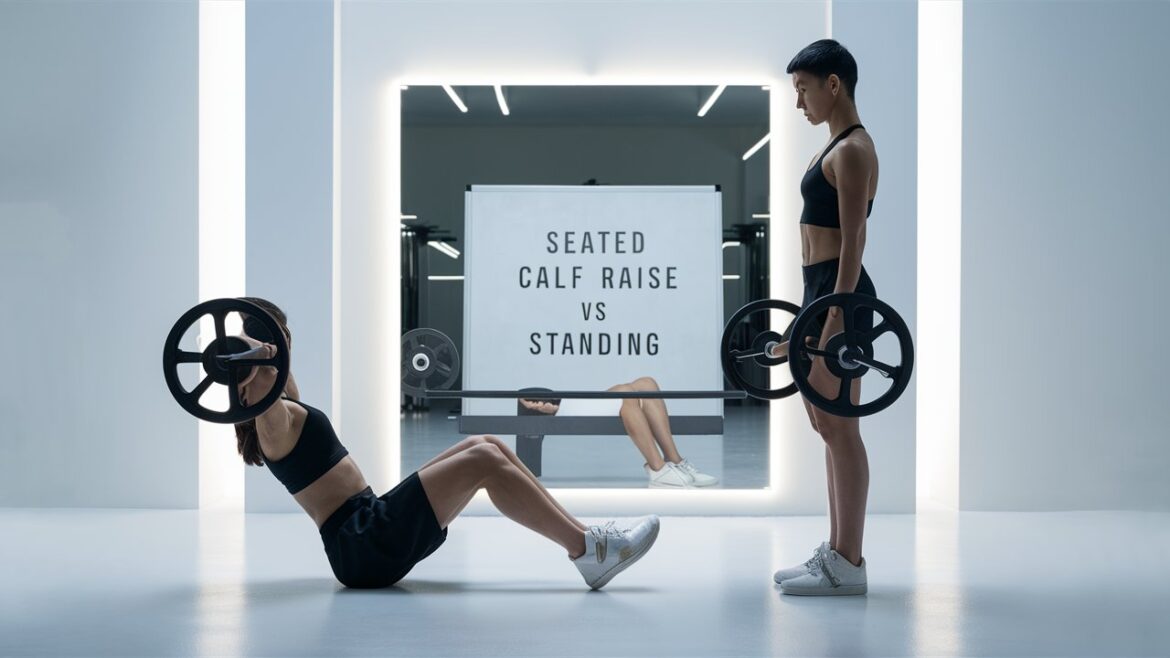Introduction
So, you’re wondering whether to do seated or standing calf raises? Very common dilemma. Both have their advantages, and which one is more appropriate to your cause? Let’s get into the details and see what works best for you with your workout.
Understanding the Calf Muscles
Anatomy of the Calf Muscles
Now, for a moment, get nerdy. Your calves comprise the gastrocnemius, soleus, and plantaris muscles. The gastrocnemius is the large outer muscle responsible for giving your calves that heart shape.
Underneath it lies the soleus, maybe not so flashy but equally important in function. The plantaris is the smallest contributor but still integral.
Contribution of the Calf Muscles in the Control of Daily Activities and Sports
Ever wondered why your calves hurt after a long day? They help you walk, run, and jump. They are very vital to stability and power; hence, correct training will make an absolutely remarkable difference in performance and day-to-day comfort levels.
Seated Dumbbell Calf Raise
Technique and Form
Face the calf raise machine, seated in it, at a 90-degree angle in the knees and feet facing forward. Now, press up the weight with your balls of the feet. Keep it slow, controlled—no bouncing!
Muscle Engagement
The seated calf raise primarily works the soleus. It engages your gastrocnemius but to a lesser degree. The move is good in adding thickness to the lower calves.
Benefits
- It isolates the soleus muscle
- Less stress on your lower back
- Good alternative for people with balance problems
- Disadvantages
- Less activation of the gastrocnemius
- Smaller ROM
Standing Calf Raise
-
Technique and Form
Stand tall on a calf raise machine or step, with feet at hip-width apart. The legs will be straightened forward and lift the heels off as high as possible. Lower them down for a full stretch.
-
Muscle Engagement
This exercise targets more of the gastrocnemius. This move also engages the soleus and plantaris but to a lesser degree.
Benefits
- Greater range of motion
- Better overall development of the calf
- Balance and coordination improve
Disadvantages
- Greater overall spinal compression
- Higher incidence of form breakdown leading to injury
Comparative Study
-
Muscle Activation
Standing calf raises work more of the gastrocnemius; seated calf raises bring more into play the soleus. Both are important in terms of balanced calf development.
-
Range of Motion
Classic standing calf raises provide a greater range of motion, which also goes to aid flexibility and full muscle activation.
-
Weight and Resistance
You’ll be able to lift more weight while doing the standing calf raise since all three muscles combined are working. Seated calf raises are much better for isolating and controlling the weight.
Standing calf raises are great for all-around muscle development and strength. Seated calf raises will help zero in on the soleus while also taking less stress off the back.
Including Both Exercises in Your Workout Routine
Balanced Development of the Calves
The performance of both seated and standing calf raises enables one to balance the muscles for overall balanced calves.
Sample Workout Plan
- Warm-up: 5-10 minutes light cardio
- Standing Calf Raise: 3 sets, 12-15 reps
- Seated Calf Raise: 3 sets, 12-15 reps
- Cool down: Stretching and foam rolling
Progression Tips
- Use lighter weights and progress gradually.
- Always train with a full range of motion and proper form
- Do variations, such as single-leg raises, to increase the challenge
Frequently Asked Questions
Which exercise is best for developing large calf muscles?
You can’t neglect either. The standing calf raise works for overall development, while the seated calf raise builds thickness.
Can I do both in the same workout?
Yes, you most certainly can. Of course, it will work at its best when you train both exercises together.
How often should I train my calves?
2-3 times a week is perfect. Keep in mind that rest and recovery are important.
What equipment will I need?
A calf raise machine would be excellent, but a step and some dumbbells will do.
Are there any exercises I can substitute for these?
Yes. Try the Donkey Calf Raise or for a variation, use a leg press machine.
Conclusion
Both seated and standing calf raises make for a superb workout routine. You’ll just nail that goal for those stronger, more defined calves once you realize the benefit each version has to offer by incorporating both into your workouts. Happy lifting!

